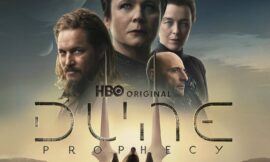“The Bounty” is a timeless cinematic exploration of power, rebellion, and the complexities of human nature set against the backdrop of a historical maritime saga. Directed by Roger Donaldson and released in 1984, the film recounts the infamous mutiny on the HMS Bounty in 1789, based on the real events chronicled in the historical record.
At the heart of the narrative is Captain William Bligh, portrayed with captivating intensity by Anthony Hopkins. Bligh is a figure both revered and reviled, known for his uncompromising discipline and authoritarian leadership style. His character serves as a catalyst for the brewing discontent among the crew, who are subjected to his harsh punishments and relentless demands during their voyage to Tahiti to collect breadfruit plants.
Opposing Bligh is Fletcher Christian, played with charismatic defiance by Mel Gibson. Christian embodies the spirit of rebellion, disillusioned by Bligh’s tyranny and driven by a desire for freedom and justice. As tensions escalate and the crew’s resentment reaches a boiling point, Christian becomes the reluctant leader of the mutiny, leading a faction of disgruntled sailors in seizing control of the ship from Bligh and casting him adrift in a small boat along with those loyal to him.
The film delves deep into the psychological dynamics of power and control, exploring the complex interplay between authority and subordination, loyalty and betrayal. Bligh’s rigid adherence to discipline and his belief in the necessity of maintaining order at all costs clash with Christian’s idealism and desire for a more equitable society aboard the ship. The mutiny becomes a symbolic struggle for autonomy and dignity, as the crew rebels against the oppressive structures of hierarchy and exploitation.
Central to the film’s narrative is the contrasting portrayal of Bligh and Christian as foils to each other. Bligh represents the old order, embodying the autocratic values of the British naval establishment, while Christian embodies the spirit of revolution and defiance, challenging the status quo and advocating for a more egalitarian society. Their conflict encapsulates larger themes of rebellion and resistance, as well as the moral ambiguity of challenging authority in pursuit of justice.
The cinematography of “The Bounty” is breathtaking, capturing the majestic beauty of the South Pacific landscapes and the harsh realities of life at sea. The film’s visual imagery serves to underscore the dichotomy between the idyllic paradise of Tahiti and the claustrophobic confines of the ship, highlighting the stark contrast between freedom and confinement, beauty and brutality.
Ultimately, “The Bounty” is a gripping tale of adventure, betrayal, and redemption that resonates with audiences long after the credits roll. It challenges viewers to confront the complexities of morality and human nature, posing timeless questions about the nature of power, authority, and the pursuit of justice. As the legacy of the mutiny on the Bounty continues to captivate the imagination, the film stands as a compelling exploration of one of history’s most enduring and enigmatic episodes.


